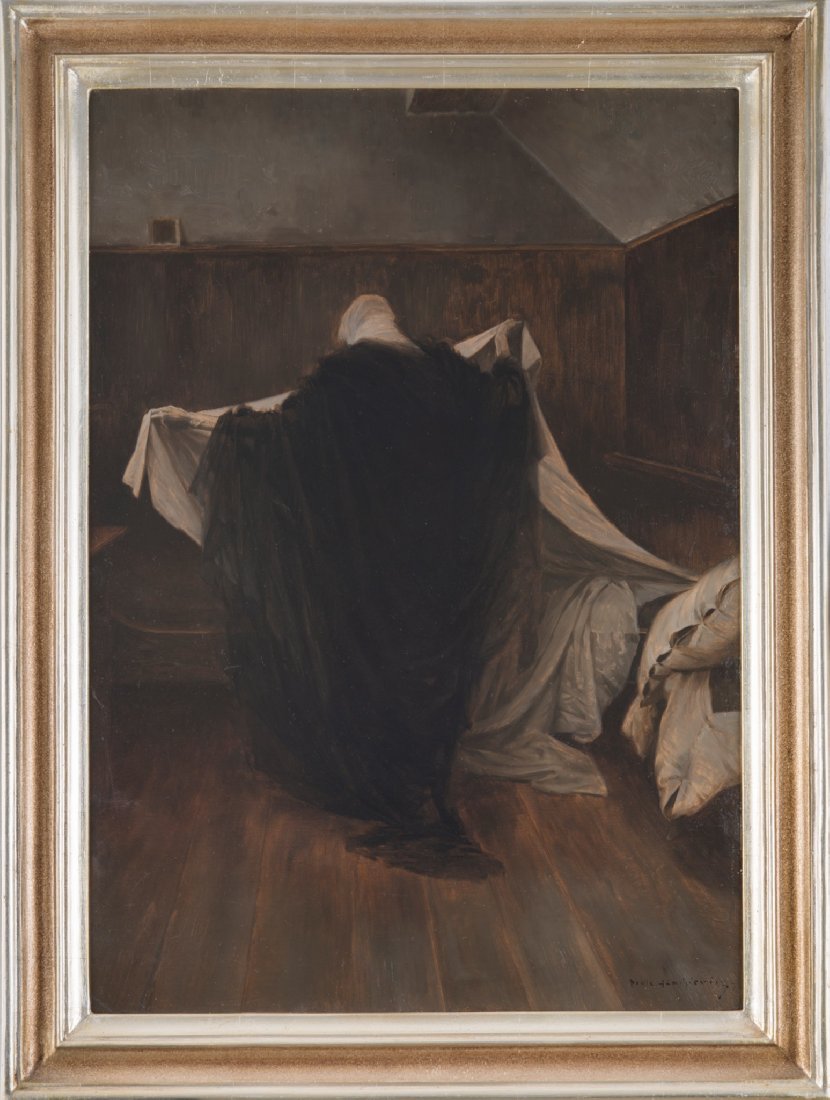Description:
Since the mid-19th century, the desacralization and deheroization of themes related to death, burial, and cemetery were due to the deteriorating social and economic situation of Europe. “Life became so unbearable for people belonging to the lower classes [..] that death itself could seem like an Arcadia of eternal peace, though perhaps not eternal life. This was clearly conveyed by English, French and Russian realist novels.” This was also reflected in the works of many artists, who often faced hunger and the prose of life. This was often accompanied by creative impotence. This resulted in self-referential works that focused on the often painful and final problems associated with them. This current work by Piotr Stachiewicz (1858-1938) falls into this current and puts us in the role of an almost eyewitness to the death of the artist. However, it was imagined with new media, the sources of which can be found in the symbolic poetry of the end of the century. This image, the last work in the five-part cycle “Ghost Workshop”, belongs to the second version of this cycle painted for the first time by Stachiewicz in 1883-1885.
Description of the painting:
In 1903, an anonymous author described its meaning as follows: “In five paintings, painted in grisaille, the artist presented a series of episodes from the eternal struggle of creative spirits striving for the heights of art. This cycle, a visible fruit of the sufferings and bitterness experienced, is a gloomy and profound look at the insignificance of artistic fame. Here we see various ‘Ghosts’ [..], appearing in the temple of work, and breaking down the resistance of matter. On the first painting stands the fame dreamed of by the artist, holding a laurel wreath in his hand [..]. On the second a dry, bony male figure in clownish garments [..], rubbing paint off the palette, next to and in the depths of the workshop, we see empty easels and a copy of the Laocoon group, an eternal symbol of the struggle of human spirit against the bonds of impotence and destruction. This figure is an irony and mockery, extinguishing the color of creativity [..]. On the third painting a great figure of melancholy, playing the lyre, with huge wings, swaying among the walls of the workshop: this is sadness, paralyzing the creative force and gnawing the artist’s soul with slow pain of wrongs and disappointments. The next ghost is anger and envy [..]. After this tearing of fame comes the last specter, quiet death comforter, enveloped in a veil of mist, covering with a white shroud the empty bed of the one who was and is no more. The last picture is the most beautiful artistically, permeated with a deep, truly melancholic atmosphere, outstanding in its composition and mood”. ** Another reviewer at the same time wrote: “[..] The last picture is shrouded with an infinite melancholy, presenting us with death-comforter, covering with a white shroud the empty bed of one who, by an unknown decree of fate, was removed from the battlefield, competitions and sufferings forever. “***


